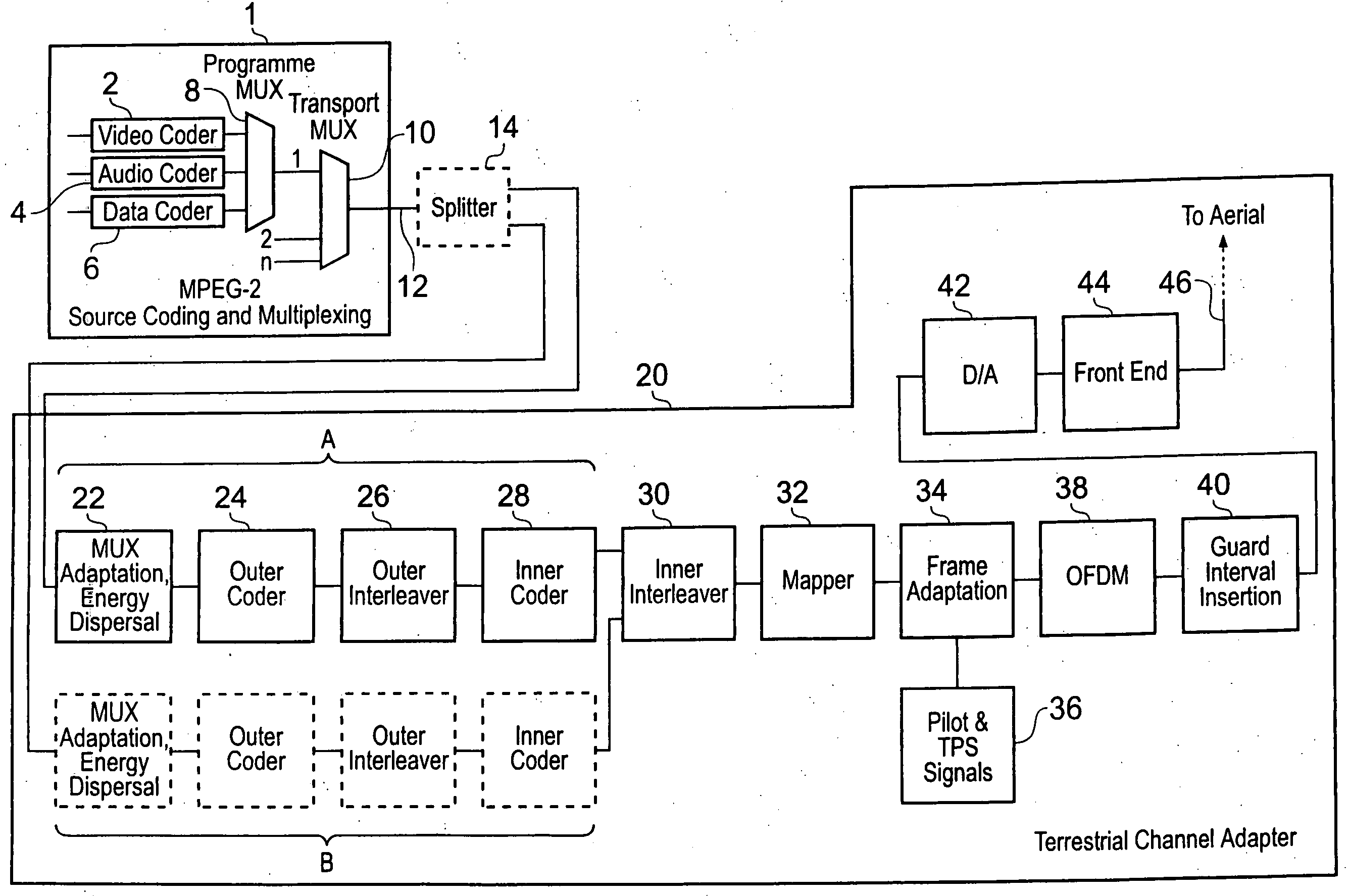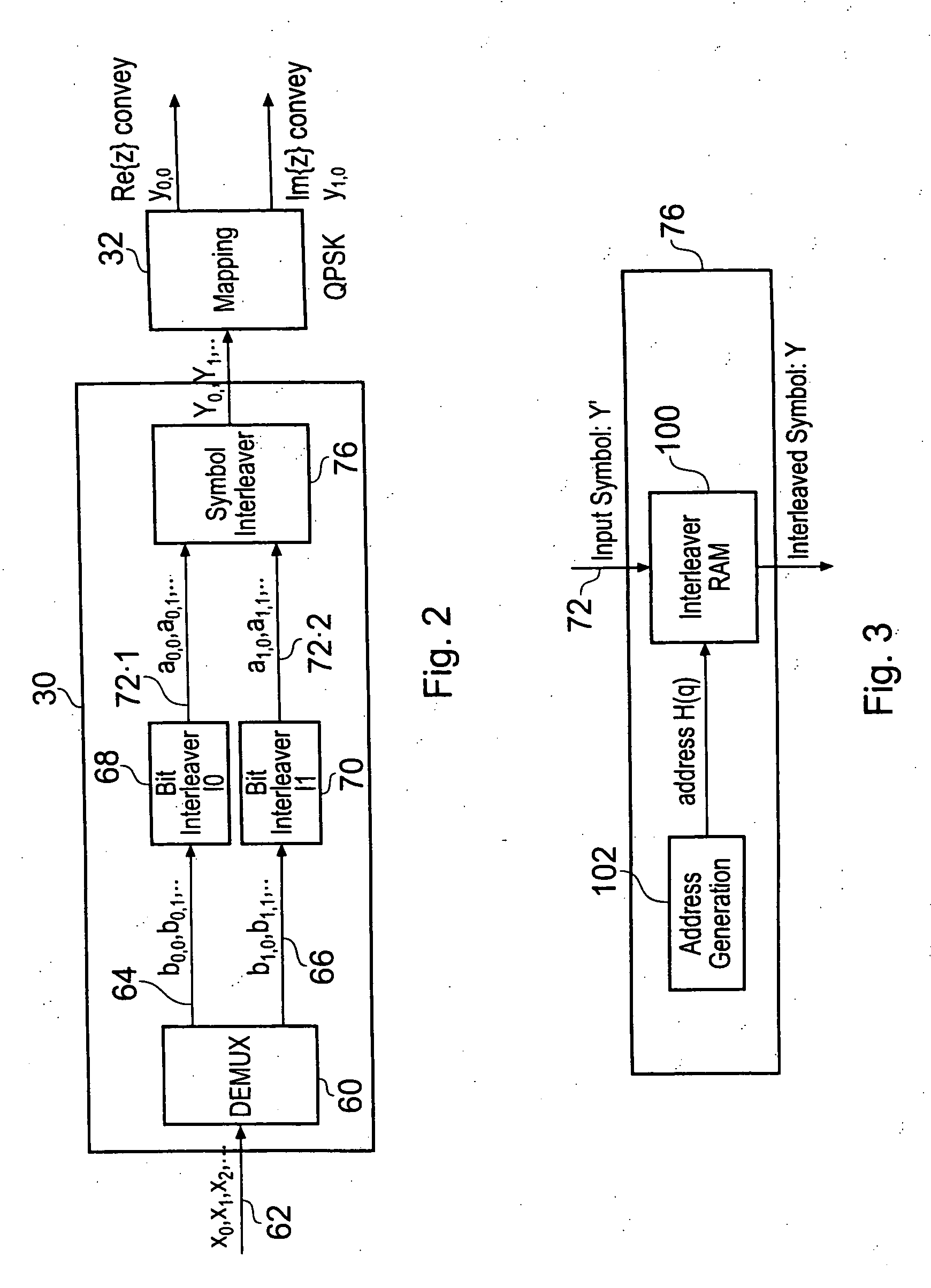Data processing apparatus and method
- Summary
- Abstract
- Description
- Claims
- Application Information
AI Technical Summary
Benefits of technology
Problems solved by technology
Method used
Image
Examples
Embodiment Construction
[0024] The existing OFDM-based DVB-T standard is composed of a 2K and an 8K mode, which means that the bandwidth used to transmit the signal is divided into either 2048 sub-carriers (2K mode) or 8192 (8K mode). The 2K mode presents some interesting features with respect to mobility. In effect, the short symbol time of this mode allows good doppler performance in mobile environments. On the other hand, the 8K mode gives the possibility to network planners to build a sparse, hence cheap, SFNs (Single Frequency Network). The investigations carried out on the subject showed that the introduction of a 4K mode would be a good trade-off between these two modes. It would give reasonably good reception for mobile users even at high driving speeds, without the need for a complicated and costly ICI (Inter Carrier Interference) cancellation scheme. It would also help to keep the cost of the network to a reasonable level. This document describes a new symbol interleaver for this 4K mode.
[0025] F...
PUM
 Login to View More
Login to View More Abstract
Description
Claims
Application Information
 Login to View More
Login to View More - R&D
- Intellectual Property
- Life Sciences
- Materials
- Tech Scout
- Unparalleled Data Quality
- Higher Quality Content
- 60% Fewer Hallucinations
Browse by: Latest US Patents, China's latest patents, Technical Efficacy Thesaurus, Application Domain, Technology Topic, Popular Technical Reports.
© 2025 PatSnap. All rights reserved.Legal|Privacy policy|Modern Slavery Act Transparency Statement|Sitemap|About US| Contact US: help@patsnap.com



